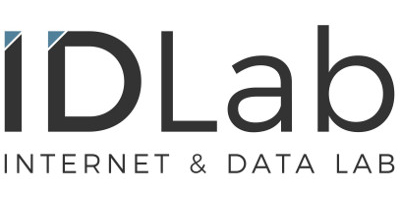Publications
Towards Dynamic Fog Resource Provisioning for Smart City Applications
Abstract 
Over the past few years, the Internet of Things (IoT) has transformed the Smart City concept into an attractive and relevant opportunity. Smart Cities aim to connect billions of objects of everyday life to the Internet to improve sustainability and citizen welfare. Fog Computing has been introduced to provide scalable and low latency services for the future IoT use cases by placing cloud resources at the edges of the network. Nevertheless, crucial challenges still remain in the Fog Computing domain. One of them is providing proper resource provisioning while reducing allocation costs, maximizing energy efficiency and minimizing latency. Therefore, in this paper, a novel Resource Discovery Service based on Peer-to-Peer (P2P) Distributed Hash Tables (DHT) is presented to enable automated resource discovery functionalities for IoT services. The proposed approach provides a flexible way of exchanging resource allocation information between the Fog and the Cloud Layer. Evaluations have been conducted to demonstrate the performance of implementing information dissemination systems based on DHTs. Performance ratios higher than 99%, including latencies under 0.7 seconds for a static context have been obtained. Results show that DHTs provide scalable discovery solutions showing the full applicability of the proposed approach in the Smart City environment.
Extensions to LwM2M for Improved Efficiency
DEMO - A Cloud-based Virtual Network Operator for Managing Multimodal LPWANs and Devices
A Cloud-based Virtual Network Operator for Managing Multimodal LPWA Networks and Devices
Flexible Multimodal Sub-Gigahertz Communication for Heterogeneous Internet of Things Applications
Sub-Gigahertz Inter-Technology Interference. How Harmful is it for LoRa?
Supporting Heterogeneous IoT Traffic using the IEEE 802.11ah Restricted Access Window
Abstract 
IEEE 802.11ah is a new Wi-Fi standard operating on unlicensed sub-GHz frequencies. It aims to provide long-range connectivity to Internet of Things (IoT) devices. The IEEE 802.11ah restricted access window (RAW) mechanism promises to increase throughput and energy efficiency in dense deployments by dividing stations into different RAW groups and allowing only one group to access the channel at a time. In this demo, we demonstrate the ability of the RAWmechanism to support a large number of densely deployed IoT stations with heterogeneous traffic requirements. Differentiated Quality of Service (QoS) is offered to a small set of high-throughput wireless cameras that coexist with thousands of best-effort sensor monitoring stations. The results are visualized in near real-time using our own developed IEEE 802.11ah visualizer running on top of the ns-3 event-based network simulator.
Interactive Web Visualizer for IEEE 802.11ah ns-3 Module
Abstract 
The main purpose of running ns-3 simulations is to generate relevant data sets for further study. There are two strategies to generate output from ns-3, either using generic predefined bulk output mechanisms or using the ns-3’s Tracing system. Both require parsing the raw output data to extract and process the data of interest to obtain meaningful information. However, parsing such output is in most cases time consuming and prone to mistakes. Post-processing is even harder when a large number of simulations needs to be analyzed and even the tracing system cannot simplify this task. Moreover, results obtained this way are only available once the simulation is finished.Therefore, we developed a user-friendly interactive visualization and post-processing tool for IEEE 802.11ah called ahVisualizer. Beside the topology and MAC configuration, ahVisualizer also plots our traces for each node over time during the simulation, as well as averages and standard deviations for each traced parameter. It can compare all the measured values across different simulations. Users can easily download figures and data in various formats. Moreover, it includes a post-processing tool which plots desired series, with desired fixed parameters, from a large set of simulations. This paper presents the ahVisualizer, its services and its architecture and shows how this tool enables much faster and easier data analysis and monitoring of ns-3 simulations with 802.11ah.
Extension of the IEEE 802.11ah ns-3 Simulation Module
Abstract 
IEEE 802.11ah, marketed as Wi-Fi HaLow, is a new Wi-Fi standard for sub-1Ghz communications, aiming to address the major challenges of the Internet of Things (IoT), namely connectivity among a large number of densely deployed power-constrained stations. The standard was only published in May 2017 and hardware supporting
Wi-Fi HaLow is not available on the market yet. As such, research on 802.11ah has been mostly based on mathematical and simulation models. Mathematical models generally introduce several simplifications and assumptions, which do not faithfully reflect real network conditions. As a solution, we previously developed an
IEEE 802.11ahmodule for ns-3, publicly released in 2016. This initial release consisted of physical layer models for sub-1GHz communications and an implementation of the fast association and Restricted Access Window (RAW) channel access method. In this paper, we present an extension to our IEEE 802.11ah simulator. It contains
several new features: an online RAWconfiguration interface, an energy state model, adaptive Modulation and Coding Scheme (MCS), and Traffic Indication Map (TIM) segmentation. This paper presents the details of our implementation, along with experimental results to validate each new feature. The extended Wi-Fi HaLow module
can now support different scenarios with both uplink and downlink heterogeneous traffic, together with real-time RAW optimization, sleep management for energy conservation and adaptive MCS.
Performance Evaluation of IEEE 802.11ah Networks With High-Throughput Bidirectional Traffic
Abstract 
So far, existing sub-GHz wireless communication technologies focused on low-bandwidth, long-range communication with large numbers of constrained devices. Although these characteristics are fine for many Internet of Things (IoT) applications, more demanding application requirements could not be met and legacy Internet technologies such as Transmission Control Protocol/Internet Protocol (TCP/IP) could not be used. This has changed with the advent of the new IEEE 802.11ah Wi-Fi standard, which is much more suitable for reliable bidirectional communication and high-throughput applications over a wide area (up to 1 km). The standard offers great possibilities for network performance optimization through a number of physical- and link-layer configurable features. However, given that the optimal configuration parameters depend on traffic patterns, the standard does not dictate how to determine them. Such a large number of configuration options can lead to sub-optimal or even incorrect configurations. Therefore, we investigated how two key mechanisms, Restricted Access Window (RAW) grouping and Traffic Indication Map (TIM) segmentation, influence scalability, throughput, latency and energy efficiency in the presence of bidirectional TCP/IP traffic. We considered both high-throughput video streaming traffic and large-scale reliable sensing traffic and investigated TCP behavior in both scenarios when the link layer introduces long delays. This article presents the relations between attainable throughput per station and attainable number of stations, as well as the influence of RAW, TIM and TCP parameters on both. We found that up to 20 continuously streaming IP-cameras can be reliably connected via IEEE 802.11ah with a maximum average data rate of 160 kbps, whereas 10 IP-cameras can achieve average data rates of up to 255 kbps over 200 m. Up to 6960 stations transmitting every 60 s can be connected over 1 km with no lost packets. The presented results enable the fine tuning of RAW and TIM parameters for throughput-demanding reliable applications (i.e., video streaming, firmware updates) on one hand, and very dense low-throughput reliable networks with bidirectional traffic on the other hand.




